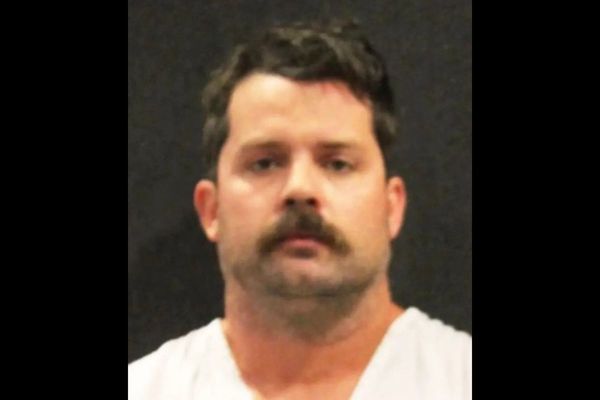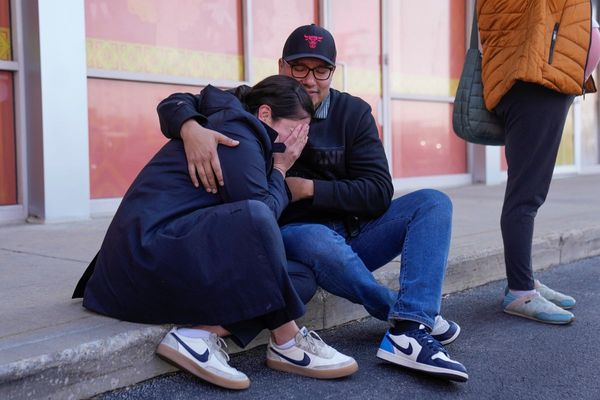IN an alternative version of Gladiator II, director Ridley Scott might have ventured to Caledonia. Though nowhere north of Rome appears in the film, one of its three antagonists, the co-emperor Caracalla, cemented his real-life villain status beyond the wall.
In 208AD, Emperor Septimius Severus brought his sons, Caracalla and Geta, on a campaign to annihilate the troublesome tribes in what is now Scotland. Rome’s first foray north came in the late 70s AD led by the governor of Britannia, Gnaeus Julius Agricola. Subsequent decades saw a back-and-forth cycle of invasion and withdrawal, with other major campaigns taking place around 90-105AD, 139-158AD, and 160-184AD.
We even get a sly reference to Agricola’s Caledonian conquests in Gladiator II’s opening battle. Our hero, Lucius, rallies his North African town against a Roman assault by invoking their status as the “last free city”, scorning Rome’s relentless lust for conquest, and paraphrasing Tacitus’s lament that Romans “create a desert and call it peace”. All these sentiments were spoken by Calgacus, a fictional Caledonian chieftain who Tacitus claimed led a native confederation at the Battle of Mons Graupius (83AD) with similarly disastrous results as those suffered by Lucius’s comrades.
In the Caledonian campaign of 208-210AD, Emperor Severus put Caracalla in charge. His instructions echoed the words of Agamemnon before the sacking of Troy: “Yea, whatso is found in the womb of the mother, child unborn though it be, let it not escape utter destruction!”
Every person was to be killed on sight. At Caracalla’s disposal was the largest army to ever invade Britain, a force of 30,000 to 40,000 legionaries and auxiliaries as well as a detachment of the elite Praetorian Guard. Such a force was far too powerful to be directly resisted, and the local people could only flee before it in the hope of avoiding a massacre.
The Romans camped around the ruins of Trimontium, a cavalry fort near Melrose which had been either deliberately abandoned or violently overwhelmed in the early 180s AD. Veteran fieldwalker Walter Elliot discovered an intaglio gemstone bearing the likeness of Caracalla at the fort site in 1998, attesting to the future emperor’s presence there.
Archaeological evidence suggests that the destruction left in Caracalla’s wake was so terrible that the native peoples took four generations or more to recover. Crops withered and fields went unseeded, populations plummeted, and the resulting famine and disease killed countless more men, women, and children. Severus and Caracalla reached at least as far north as the edge of the Grampians near Stonehaven. Incidentally, “Grampian” is erroneous – the Romans called the area the Graupian mountains, but a 1476 edition of Tacitus’s Agricola mistakenly recorded the name with an “m” rather than a “u” and it’s stuck ever since.
All this bloodshed achieved nothing. The Roman invasion of 208 to 210AD won no great battlefield victory, nor did it ultimately subdue the tribes. A surrender to Rome was allegedly negotiated in 209AD, but when Emperor Severus died at Eboracum (York) in 211AD Caracalla promptly abandoned the north and the Romans withdrew to Hadrian’s Wall. This was to be the last confirmed and major Roman invasion of Scotland.
When it comes to Caracalla himself, Gladiator II’s rendition is an almost total inversion of the historical figure. The film depicts him as a mewling, cackling, syphilis-ridden manchild barely tethered to reality and wholly given over to sudden outbursts as inane as they are bloodthirsty.
In reality, Caracalla obsessively cultivated an image of hypermasculinity, unfeeling ruthlessness, physical dominance, and martial prowess. He was sadistic, but otherwise sane and calculating – a terrifying combination.
Spoiler ahead! In the film, Caracalla is manipulated by Denzel Washington’s Macrinus into murdering his brother, Geta, who appears to be the older and more level-headed of the siblings. In history, Caracalla was actually the elder brother and his murder of Geta was no spontaneous fit. He followed it with a systematic purge of perhaps 20,000 of Geta’s supporters, raising soldiers’ pay and bribing the army into obedience to the extent that it triggered a financial crisis and monetary devaluation throughout the empire.
Armed with this history, it’s easy to envision an alternative Gladiator II script: after the events of the first film, young Lucius is sent beyond the reach of Rome not to Numidia, but to Britannia. There he finds peace and forges a family, only for the genocidal Caracalla to arrive with an unbeatable army and turn it all to ash.
Lucius must then win over the common soldiers, as Russell Crowe’s Maximus once did, and dismantle Caracalla’s war machine from within as the Caledonians rally to defend their homeland as the “last of the free”. Scottish scriptwriters, you know what to do!







